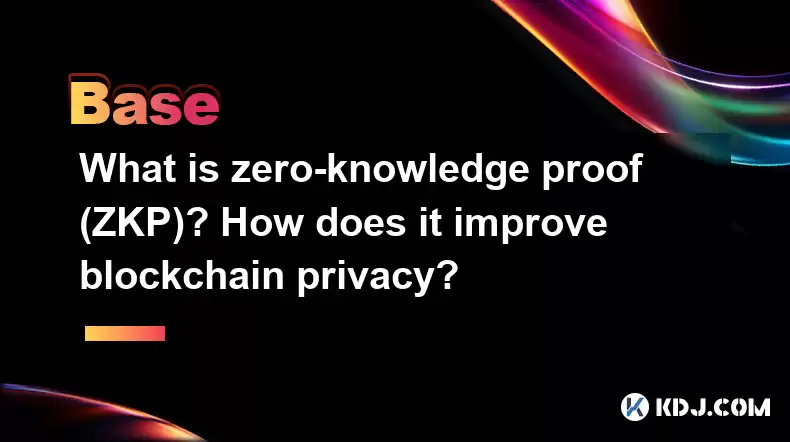-
 Bitcoin
Bitcoin $118900
0.42% -
 Ethereum
Ethereum $3710
-2.88% -
 XRP
XRP $3.513
-2.96% -
 Tether USDt
Tether USDt $1.000
-0.01% -
 Solana
Solana $203.0
3.65% -
 BNB
BNB $765.5
-1.29% -
 USDC
USDC $0.9998
0.00% -
 Dogecoin
Dogecoin $0.2671
-4.18% -
 Cardano
Cardano $0.8817
-3.63% -
 TRON
TRON $0.3139
-0.64% -
 Hyperliquid
Hyperliquid $44.34
-5.45% -
 Stellar
Stellar $0.4637
-4.08% -
 Sui
Sui $3.908
-2.59% -
 Chainlink
Chainlink $19.34
-2.62% -
 Hedera
Hedera $0.2712
-3.77% -
 Avalanche
Avalanche $24.97
-4.13% -
 Bitcoin Cash
Bitcoin Cash $519.8
-1.48% -
 Shiba Inu
Shiba Inu $0.00001518
-3.74% -
 Litecoin
Litecoin $115.6
-2.21% -
 Toncoin
Toncoin $3.460
3.68% -
 UNUS SED LEO
UNUS SED LEO $8.977
-0.07% -
 Polkadot
Polkadot $4.460
-2.96% -
 Uniswap
Uniswap $10.53
-5.43% -
 Ethena USDe
Ethena USDe $1.001
0.01% -
 Monero
Monero $323.6
-0.36% -
 Pepe
Pepe $0.00001379
-2.60% -
 Bitget Token
Bitget Token $4.772
-3.90% -
 Dai
Dai $0.9999
0.00% -
 Aave
Aave $307.5
-6.66% -
 Bittensor
Bittensor $441.8
0.84%
What is zero-knowledge proof (ZKP)? How does it improve blockchain privacy?
ZKP enhances blockchain privacy by enabling confidential transactions, where details like amount and identities are hidden, yet verified on the ledger.
Apr 06, 2025 at 06:49 am

Zero-knowledge proof (ZKP) is a cryptographic method that allows one party to prove to another that a given statement is true, without revealing any additional information beyond the fact that the statement is indeed true. This concept, which was first introduced in the 1980s by Shafi Goldwasser, Silvio Micali, and Charles Rackoff, has become increasingly important in the realm of blockchain and cryptocurrency, where privacy and security are paramount.
ZKP operates on the principle of proving knowledge without disclosing the knowledge itself. For instance, if Alice wants to prove to Bob that she knows the solution to a puzzle without revealing the solution, she can use a zero-knowledge proof. This method ensures that Bob is convinced of Alice's knowledge, but he learns nothing about the solution itself.
How Zero-Knowledge Proofs Work
The mechanics of ZKP involve a series of interactions between a prover and a verifier. The prover aims to convince the verifier of the truth of a statement without revealing any underlying information. This process typically involves several steps:
- Statement and Witness: The prover has a statement and a witness (the secret information that proves the statement). For example, the statement could be "I know the password to this account," and the witness would be the actual password.
- Challenge and Response: The verifier issues a challenge to the prover, who then responds in a way that proves the statement without revealing the witness. This can be repeated multiple times to increase the confidence level of the verifier.
- Verification: The verifier checks the response to ensure it aligns with the statement. If the response is correct, the verifier is convinced of the statement's truth without knowing the witness.
ZKP in Blockchain and Cryptocurrency
In the context of blockchain and cryptocurrency, zero-knowledge proofs play a crucial role in enhancing privacy and security. Traditional blockchain transactions are transparent and can be traced, which poses privacy concerns for users. ZKP addresses this issue by allowing transactions to be verified without revealing the sender, receiver, or the amount involved.
One of the most notable implementations of ZKP in blockchain is Zcash, a cryptocurrency that uses zero-knowledge proofs to provide enhanced privacy. In Zcash, transactions are shielded, meaning that the details of the transaction are encrypted and only the parties involved can see them. This is achieved through a type of zero-knowledge proof called zk-SNARKs (Zero-Knowledge Succinct Non-Interactive Argument of Knowledge).
Types of Zero-Knowledge Proofs
There are several types of ZKP used in blockchain and cryptocurrency, each with its own strengths and applications:
- zk-SNARKs: These are succinct and non-interactive, meaning that the proof can be verified quickly and without further interaction between the prover and verifier. They are used in Zcash and other privacy-focused cryptocurrencies.
- zk-STARKs: These are scalable and transparent, offering a higher level of security and efficiency. They are used in projects like StarkWare, which aims to scale Ethereum.
- Bulletproofs: These are shorter and more efficient than zk-SNARKs, making them suitable for applications where proof size is a concern. They are used in cryptocurrencies like Monero to enhance privacy.
Improving Blockchain Privacy with ZKP
ZKP significantly improves blockchain privacy by enabling confidential transactions. Here’s how it achieves this:
- Confidential Transactions: By using ZKP, blockchain networks can process transactions where the amount, sender, and receiver are hidden from the public ledger. This means that while the transaction is verified and recorded on the blockchain, the details remain private.
- Anonymity: ZKP allows users to prove ownership of funds without revealing their identity. This is particularly important for users who wish to maintain their anonymity while transacting on public blockchains.
- Regulatory Compliance: While enhancing privacy, ZKP can also be used to comply with regulatory requirements. For instance, a user can prove that a transaction adheres to certain rules (like anti-money laundering regulations) without revealing the transaction details.
Practical Applications of ZKP in Blockchain
Several blockchain projects and cryptocurrencies have implemented ZKP to enhance privacy and security. Here are some notable examples:
- Zcash: As mentioned earlier, Zcash uses zk-SNARKs to enable shielded transactions, providing users with the option to keep their transaction details private.
- Monero: Monero uses Bulletproofs to enhance the privacy of its transactions. While Monero already offers a high level of privacy through ring signatures and stealth addresses, Bulletproofs further reduce the size and cost of transactions.
- Ethereum: Ethereum has been exploring the use of zk-STARKs to improve scalability and privacy. Projects like StarkWare are working on integrating zk-STARKs into Ethereum to enable private and scalable transactions.
Implementing ZKP in a Blockchain Project
For developers interested in implementing ZKP in their blockchain projects, here are the steps to consider:
- Choose the Right Type of ZKP: Depending on the specific needs of the project, choose between zk-SNARKs, zk-STARKs, or Bulletproofs. Each type has its own trade-offs in terms of efficiency, security, and complexity.
- Integrate ZKP Libraries: Use existing libraries and frameworks that support ZKP. For example, the libsnark library is commonly used for zk-SNARKs, while Cairo is used for zk-STARKs.
- Design the Protocol: Design the protocol to incorporate ZKP into the transaction verification process. This involves defining how the prover and verifier will interact and how the proofs will be generated and verified.
- Test and Validate: Thoroughly test the implementation to ensure that the ZKP works as intended and does not introduce any vulnerabilities. This includes testing the privacy and security aspects of the transactions.
- Deploy and Monitor: Deploy the ZKP-enabled blockchain and monitor its performance and security. Continuously update and improve the implementation based on feedback and new developments in the field.
Frequently Asked Questions
Q: Can zero-knowledge proofs be used for purposes other than privacy in blockchain?
A: Yes, ZKP can be used for various other purposes in blockchain, such as proving the correctness of computations, verifying the integrity of data, and ensuring the compliance of smart contracts without revealing the underlying code or data.
Q: Are there any limitations or challenges associated with implementing zero-knowledge proofs?
A: Yes, implementing ZKP can be challenging due to the complexity of the cryptographic techniques involved. Additionally, ZKP can be computationally intensive, which may impact the performance and scalability of the blockchain. There are also ongoing concerns about the security of certain types of ZKP, such as the potential for quantum computing to break some of the underlying cryptographic assumptions.
Q: How do zero-knowledge proofs affect the transparency of blockchain?
A: ZKP can reduce the transparency of blockchain by allowing transactions to be verified without revealing the details. While this enhances privacy, it can also make it more difficult to audit and monitor the blockchain for malicious activities. However, some implementations of ZKP allow for selective transparency, where certain parties can access the transaction details if needed.
Q: Can zero-knowledge proofs be used in conjunction with other privacy-enhancing technologies?
A: Yes, ZKP can be used in conjunction with other privacy-enhancing technologies like ring signatures, stealth addresses, and confidential transactions. Combining these technologies can provide a higher level of privacy and security for blockchain users.
Disclaimer:info@kdj.com
The information provided is not trading advice. kdj.com does not assume any responsibility for any investments made based on the information provided in this article. Cryptocurrencies are highly volatile and it is highly recommended that you invest with caution after thorough research!
If you believe that the content used on this website infringes your copyright, please contact us immediately (info@kdj.com) and we will delete it promptly.
- Dianne Smith, a Spanish Doubloon, and JM Mason: A Pike County Tale
- 2025-07-23 08:30:13
- MoonBull vs. Turbo: Who Wins the Crypto Meme Coin Race in 2025?
- 2025-07-23 08:30:13
- PNC Bank & Coinbase: Banking on Crypto's Future, NYC Style
- 2025-07-23 06:30:12
- Ruvi AI: The Next Avalanche Riding the AI and Blockchain Wave?
- 2025-07-23 06:30:12
- Bullish Cryptos: BlockDAG Leads the Charge, Aptos Integrates WBTC, and More!
- 2025-07-23 07:10:14
- Crypto Coins Under $1 to Watch: BlockDAG, Stellar, Cronos, and Sei
- 2025-07-23 07:10:14
Related knowledge

What is the difference between CeFi and DeFi?
Jul 22,2025 at 12:28am
Understanding CeFi and DeFiIn the world of cryptocurrency, CeFi (Centralized Finance) and DeFi (Decentralized Finance) represent two distinct financia...

How to qualify for potential crypto airdrops?
Jul 23,2025 at 06:49am
Understanding What Crypto Airdrops AreCrypto airdrops refer to the distribution of free tokens or coins to a large number of wallet addresses, often u...

What is the difference between a sidechain and a Layer 2?
Jul 20,2025 at 11:35pm
Understanding the Concept of SidechainsA sidechain is a separate blockchain that runs parallel to the main blockchain, typically the mainnet of a cryp...

What is the Inter-Blockchain Communication Protocol (IBC)?
Jul 19,2025 at 10:43am
Understanding the Inter-Blockchain Communication Protocol (IBC)The Inter-Blockchain Communication Protocol (IBC) is a cross-chain communication protoc...

How does sharding improve scalability?
Jul 20,2025 at 01:21am
Understanding Sharding in BlockchainSharding is a database partitioning technique that is increasingly being adopted in blockchain technology to enhan...

What is the "crypto trilemma" of scalability, security, and decentralization?
Jul 19,2025 at 06:28pm
Understanding the Concept of the Crypto TrilemmaThe crypto trilemma refers to the challenge of simultaneously achieving scalability, security, and dec...

What is the difference between CeFi and DeFi?
Jul 22,2025 at 12:28am
Understanding CeFi and DeFiIn the world of cryptocurrency, CeFi (Centralized Finance) and DeFi (Decentralized Finance) represent two distinct financia...

How to qualify for potential crypto airdrops?
Jul 23,2025 at 06:49am
Understanding What Crypto Airdrops AreCrypto airdrops refer to the distribution of free tokens or coins to a large number of wallet addresses, often u...

What is the difference between a sidechain and a Layer 2?
Jul 20,2025 at 11:35pm
Understanding the Concept of SidechainsA sidechain is a separate blockchain that runs parallel to the main blockchain, typically the mainnet of a cryp...

What is the Inter-Blockchain Communication Protocol (IBC)?
Jul 19,2025 at 10:43am
Understanding the Inter-Blockchain Communication Protocol (IBC)The Inter-Blockchain Communication Protocol (IBC) is a cross-chain communication protoc...

How does sharding improve scalability?
Jul 20,2025 at 01:21am
Understanding Sharding in BlockchainSharding is a database partitioning technique that is increasingly being adopted in blockchain technology to enhan...

What is the "crypto trilemma" of scalability, security, and decentralization?
Jul 19,2025 at 06:28pm
Understanding the Concept of the Crypto TrilemmaThe crypto trilemma refers to the challenge of simultaneously achieving scalability, security, and dec...
See all articles

























































































